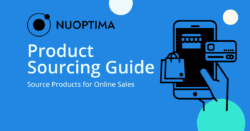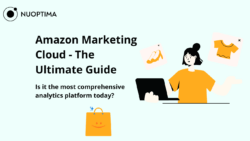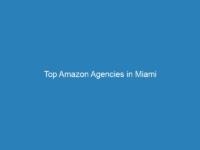الملخص
- تُعد العلامات التجارية الخاصة لأمازون مصدر قلق متزايد لتجار التجزئة الذين يتطلعون إلى البيع على أمازون، وهم محقون في ذلك. فقد استثمرت أمازون مئات الملايين في تنمية علاماتها التجارية ذات العلامات التجارية الخاصة في السنوات العشر الماضية لسرقة حصتها السوقية من البائعين الخارجيين.
- وقد لفتت استثمارات أمازون القوية، المقترنة بالنمو في أعمال العلامات التجارية الخاصة انتباه الحكومة ووسائل الإعلام، وواجهت أمازون الكثير من التدقيق، حيث اتهم أصحاب العلامات التجارية أمازون باستخدام بيانات الطرف الثالث لإطلاق علاماتها التجارية الخاصة.
- تدير أمازون أكثر من 100 علامة تجارية خاصة تبيع في جميع المجالات الرئيسية تقريبًا، بما في ذلك الأغذية والمشروبات والسيارات والملابس والإلكترونيات. تتطلع أمازون إلى القيام بما كانت تقوم به متاجر الطوب والملاط على مدار السبعين عاماً الماضية. وعلى الرغم من أن هذه أخبار رائعة للعملاء الذين يحصلون على منتج لائق بسعر أقل، إلا أنها ليست جيدة بالنسبة للعلامات التجارية الصغيرة التي تعمل في مجال FBA والتي تفقد حصتها في السوق لصالح أمازون.
مقدمة
إنه سيناريو مألوف لدينا جميعًا، حيث تجد منتجًا يحمل علامة تجارية في أحد ممرات متاجر التجزئة المفضلة لديك، ولكن بعد البحث في الجوار تجد منتجًا مماثلًا بسعر أقل بكثير. على الرغم من أن هذا المنتج الأرخص يميل إلى أن يبدو أقل إثارة للإعجاب بعلامته التجارية الأساسية وتغليفه المعتاد، إلا أن العلامة التجارية بالنسبة لمعظمنا ليست على رأس قائمة أولوياتنا عند البحث عن السلع اليومية. فوظيفتها وسعرها هما الأهم. ومع وضع ذلك في الاعتبار، سيختار معظمنا الخيار الأقل تكلفة.
بدأ تجار التجزئة في ابتكار منتجات ذات علامات تجارية خاصة منذ منتصف القرن التاسع عشر، ولكنه خط جديد من الأعمال التجارية لتجار التجزئة عبر الإنترنت مثل أمازون. هذا، بالإضافة إلى القوة الشرائية التي تتمتع بها أمازون تجعل من الصعب للغاية على صغار البائعين الذين يستخدمون خدمة Fulfillment by Amazon (FBA) منافسة منتجات أمازون ذات العلامات التجارية الخاصة.
تقدم هذه المقالة نظرة ثاقبة حول كيف يمكنك التنافس مع أمازون، حتى لو كانت علامتك التجارية FBA في مجال تعمل فيه العلامات التجارية الخاصة بأمازون.
ما هي العلامة التجارية الخاصة؟
العلامة التجارية الخاصة هي نموذج عمل ينتج فيه المُصنِّع سلعة لا يبيعها سوى تاجر تجزئة معين تحت العلامة التجارية لتاجر التجزئة هذا. ويستخدم تاجر التجزئة علامته التجارية، بما في ذلك الشعار والملصقات وإدخالات التغليف، وليس المصنعين.
هذا النموذج موجود منذ عقود حتى الآن - فكر في ألدي في أوروبا أو وول مارت في الولايات المتحدة أو تيسكوس في المملكة المتحدة. في المرة القادمة التي تذهب فيها للتسوق في Tesco أو Walmart، انظر ما إذا كان بإمكانك اكتشاف علامة تجارية خاصة. على سبيل المثال، قد ترى علامة تجارية معروفة لحفاضات الأطفال مثل بامبرز، والتي من المحتمل أن يكون سعرها أعلى بكثير من العلامة التجارية الخاصة بمتاجر التجزئة.
يتطلب نموذج العلامة التجارية الخاصة بعض الجهد الإضافي من بائع التجزئة الذي عادةً ما يكون مسؤولاً عن تطوير وإنتاج وتسويق وتسويق وتسجيل العلامة التجارية الخاصة بالمنتجات.
مثل أي تاجر تجزئة آخر، تستخدم أمازون بيانات البائعين الخارجيين لإطلاق المنتجات بشكل أسرع وبسعر أقل من نظرائها من الشركات الأخرى. يمكن لأمازون استخدام وفورات الحجم للحصول على أسعار أقل من الشركات المصنعة وتسويق المنتجات على منصتها بمساعدة خبرة عالمية المستوى من موظفيها الداخليين.
كيف بدأت أمازون علاماتها التجارية الخاصة؟
في عام 2009، قدمت أمازون أولى علاماتها التجارية الداخلية - أمازون بيزكس وبينزون. وتخصصت كلتا العلامتين التجاريتين في المستلزمات المنزلية. منذ عام 2009، عززت أمازون محفظة علاماتها التجارية الخاصة من 30 علامة تجارية فقط في عام 2017 إلى أكثر من 100 علامة تجارية حتى الآن.
تحظى بعض علامات أمازون التجارية، مثل Echo أو Kindle، بشعبية خاصة. ومع ذلك، فإن معظمها غير معروف لدى عامة الناس. في حين أن أمازون أدرجت بعض علاماتها التجارية تحت قسم "علاماتنا التجارية"، فإن البقية تحمل اسم "علامة أمازون التجارية" إما في العنوان أو في مكان ما في القائمة. في السنوات الأخيرة، قامت أمازون بتنويع ملكية علاماتها التجارية وأطلقت أيضاً أكثر من 100 علامة تجارية حصرية من أمازون بالشراكة مع علامات تجارية معروفة أو صاعدة.
يتمتع هذان النوعان من العلامات التجارية في أمازون باستراتيجيات عمل مختلفة بشكل فريد، ولكن كلاهما يندرج تحت مظلة "علاماتنا التجارية".
لا تذكر أمازون علنًا أي من العلامات التجارية الموجودة على موقعها هي علامات تجارية خاصة مقابل علامات أمازون الحصرية، ولكنها تسرد شعارات بعض أبرز علامات أمازون التجارية. إليك بعضاً منها:
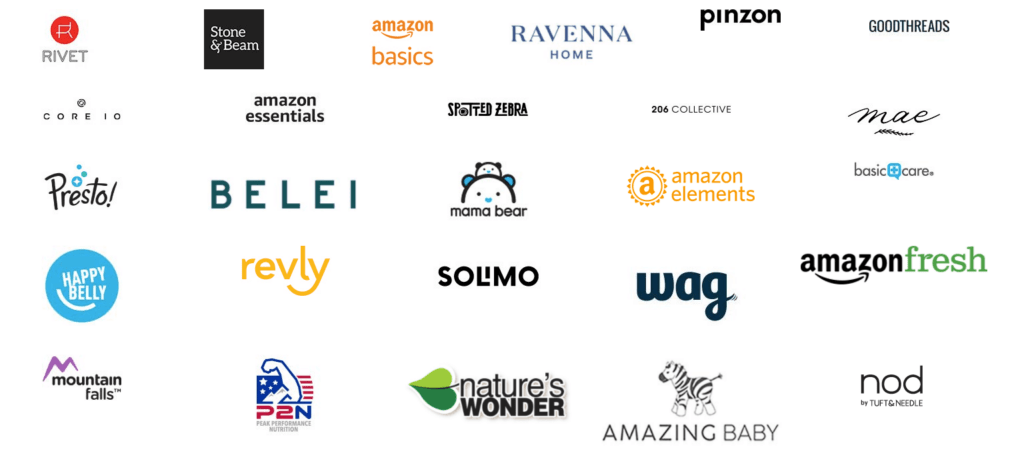
على الرغم من أن أمازون حاولت البيع في مجالات أخرى، مثل الإكسسوارات التقنية، يبدو أنها تستهدف سوقًا أوسع نطاقًا من خلال السلع اليومية التي تلبي المتطلبات اليومية للشخص العادي، وهو سوق ناجح بالفعل في أمازون.
كم عدد العلامات التجارية الخاصة التي تمتلكها أمازون؟
كانت أمازون مشغولة للغاية في بناء مجموعة العلامات التجارية الخاصة بها في السنوات العشر الماضية. مع وجود 158000 منتج عبر 45 علامة تجارية حتى عام 2019، تواصل أمازون نموها كل يوم، حيث تنشئ المزيد من العلامات التجارية الخاصة وتصبح منافساً للبائعين في أمازون. حتى الآن، أطلقت الشركة العملاقة على الإنترنت حوالي 400 علامة تجارية خاصة وحصرية.
بدأت العلامات التجارية الخاصة لأمازون بالتركيز على ثلاث فئات؛ الملابس والسلع المنزلية والبقالة. ومع ذلك، فإن عملاق التجارة الإلكترونية يتوسع الآن ليشمل العديد من الفئات الأخرى.
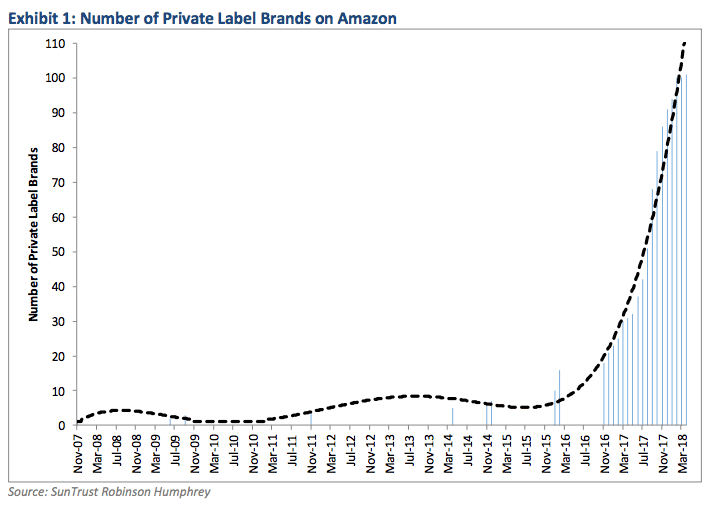
ووفقًا لشركة GartnerL2 للأبحاث، فإن غالبية العلامات التجارية للعلامات التجارية الخاصة التي تمتلكها أمازون والبالغ عددها 100 علامة تجارية خاصة لم تحقق أداءً جيدًا، وتمثل مجتمعة أقل من 11 تيرابايت من المبيعات. أنجح العلامات التجارية للعلامات التجارية الخاصة لأمازون هي AmazonBasics و Amazon Collection و Amazon Essentials. يبدو أن أمازون تفضل العلامات التجارية الخاصة التي تقدم منتجات ذات جودة عالية وعامة بسعر أقل من أي مكان آخر على الإنترنت.
كيف يمكنك التنافس مع العلامات التجارية الخاصة من أمازون؟
سيكون البيع في فئة تهيمن عليها أمازون بالفعل معركة شاقة. وتتمتع أمازون ببعض المزايا الواضحة، مثل القوة الشرائية الأفضل، وميزانيات تسويق أعلى، وكمية هائلة من بيانات العملاء للاستفادة منها. أما بالنسبة للعلامات التجارية الأصغر حجماً في مجال التجارة الإلكترونية أو العلامات التجارية الأصغر حجماً في مجال التجارة الإلكترونية أو FBA، فإن التنافس على حصة سوقية ضد أمازون لا يبدو ممكناً.
ومع ذلك، هناك بعض الأشياء التي يمكنك القيام بها لزيادة فرص علامتك التجارية في النجاح عند مواجهة ملك التجارة الإلكترونية:
إذا لم تكن تبيع بالفعل على أمازون
إذا لم تكن تبيع بالفعل على أمازون وتتطلع إلى إطلاق علامة تجارية على المنصة، فإننا نوصي بشدة بالابتعاد عن المجالات التي تتمتع أمازون بحصة سوقية قوية فيها، مثل الإلكترونيات ومنتجات البقالة والملابس والإكسسوارات الإلكترونية. فإلى جانب حقيقة أنك ستجد صعوبة في التفوق على أمازون، فإن هذه الفئات ليست أفضل المجالات التي يمكنك إطلاق علامات تجارية على أمازون على أي حال بسبب طبيعتها التنافسية الطبيعية.
بعض من أفضل المجالات التي يمكن أن تبدأ فيها علامة تجارية تابعة لأمازون FBA هي السلع اليومية مثل الأواني وإكسسوارات النباتات واللافتات والإضاءة المتخصصة وورق الحائط القابل للتخصيص. هذه المجالات متخصصة للغاية ولا تهيمن عليها أمازون - أو أي علامة تجارية معروفة في هذا الشأن. في الأساس، كلما كان المجال "الرائع" أقل "روعة"، كان ذلك أفضل.
إذا كنت تبيع بالفعل على أمازون
العلامة التجارية وقصة العلامة التجارية
تركز علامات أمازون التجارية الخاصة على شيء واحد فقط: بيع المنتج بأقل سعر ممكن. ومع ذلك، تميل علاماتها التجارية إلى الافتقار إلى العلامة التجارية أو الجودة. هذا هو المكان الذي تمتلك فيه الميزة.
إذن، لقد عملتَ بجد لتطلق علامتك التجارية. لقد قمت بإنشاء منتج عالي الجودة. لقد أخذت الوقت الكافي لبناء فريق والتأكد من أنك تقدم قيمة. نحن نعلم ذلك لأننا نتحدث إلى مالكي العلامات التجارية داخل وخارج أمازون من أجل لقمة العيش. بصفتك مالكًا لعلامتك التجارية، تحتاج إلى التأكد من توصيل قصة علامتك التجارية على أمازون طوال رحلة علامتك التجارية بأكملها. هذه إحدى أفضل الطرق للتميز أمام أمازون.
في حين أن معظم العلامات التجارية للتجارة الإلكترونية خارج أمازون تقوم بعمل رائع في هذا الأمر، لسبب أو لآخر، فإنها تفشل في توصيل قصة علامتها التجارية ورؤيتها على أمازون، وتخسر أمام أمازون. تقوم أفضل العلامات التجارية الأصلية في أمازون FBA بعمل رائع في سرد قصة علامتها التجارية، مما يساعدها على النمو على الرغم من التنافس المباشر مع أمازون.
إليك بعض أفضل الطرق لسرد قصة علامتك التجارية وإقناع المستهلكين بشراء منتجك على أمازون:
- استخدم الوصف الخاص بك لبيع مزايا منتجك، ولا تكتفِ بسرد الميزات فقط.
- قم بتحميل 6-8 صور عالية الجودة، بما في ذلك 2-3 صور جذابة عاطفياً لنمط الحياة ومقطع فيديو واحد على الأقل عالي الجودة يستند إلى دليل اجتماعي.
- تأكد من أن صورك ملفتة للنظر، بحيث تظهر في نتائج البحث والإعلانات.
- تأكد من أنك تأخذ العميل في رحلة من أعلى القائمة إلى أسفلها باستخدام صور رائعة ونسخة مبيعات جذابة.
- أنشئ صفحة متجر مرئية للغاية وتركز على المزايا لزيادة عدد الزيارات.
التسويق
تأكد من تسليط الضوء على الميزات التي تجعل منتجك فريدًا من نوعه مقارنةً بمنتجات أمازون ذات العلامات التجارية الخاصة الأرخص. هذا هو المكان الذي يمكنك فيه استخدام جميع أبحاث السوق وبيانات العملاء الرمزية للتحدث إلى جمهورك.
قم دائمًا بتسليط الضوء على أي شيء فريد حول عرض منتجك في قوائمك وتسويقك على أمازون. فيما يلي بعض من أفضل نقاط البيع الفريدة لإبرازها في جهودك التسويقية على أمازون:
- الدليل الاجتماعي
اذكر متابعيك على وسائل التواصل الاجتماعي إذا كان لديك عدد كبير من المتابعين.
- الملكية الفكرية (IP)
قم دائمًا بتسليط الضوء على أي براءات اختراع أو علامات تجارية، فهذا يجعلك متميزًا عن الآخرين ويزيد من ثقة العملاء ومعدلات التحويل.
- نتائج العملاء
من المفيد دائمًا للمشترين المحتملين رؤية النتائج التي حصل عليها عملاؤك. كلما كان لديك المزيد، كان ذلك أفضل. من الأفضل أن تحصل على ذلك في شكل فيديو وتبرزه في محتوى A+ الخاص بك.
- مواد عالية الجودة
أشر إلى أي اختلافات في الجودة قد تجعل منتجك الخيار الأفضل. على سبيل المثال، إذا كانت منتجاتك مصنوعة من جلد حقيقي بينما تبيع أمازون جلدًا صناعيًا أو جلدًا أقل جودة.
- مصدرها أخلاقي أو مصنوعة بطريقة أخلاقية
يسعد العملاء دائماً بدفع المزيد مقابل المنتجات ذات المصادر الأخلاقية.
خدمة العملاء
تُعد خدمة العملاء الاستثنائية ميزة تنافسية لأي علامة تجارية إلكترونية تبيع على أي منصة، وأمازون ليست استثناءً. وبصفتك علامة تجارية صغيرة أو متوسطة الحجم في مجال التجارة الإلكترونية، يجب أن تتجاوز توقعات عملائك لضمان معدل استبقاء كبير، والاستفادة من التسويق الشفهي، والأهم من ذلك، الحصول على تقييمات رائعة.
في المنصات القائمة على المراجعات مثل أمازون، تعتبر المراجعات شريان الحياة لعلامتك التجارية، وتقديم خدمة عملاء رائعة هي إحدى أفضل الطرق لضمان تدفق المراجعات الإيجابية كل يوم. إن الذهاب إلى أبعد من ذلك وتقديم خدمة عملاء رائعة ليس علمًا صاروخيًا، تأكد دائمًا من رضا عملائك وأنهم يشعرون بأنهم جزء من المجتمع.
إليك بعض أهم نصائحنا لخدمة عملاء رائعة على أمازون:
- الإجابة على الأسئلة في قوائم المنتجات.
- تأكد من استباق أكبر عدد ممكن من أسئلة العملاء من خلال قوائمك.
- إرسال رسائل متابعة عبر البريد الإلكتروني - اشكر عملاءك واطلب منهم تعليقات صادقة.
- تضمين إدخالات التغليف - نسخة بسيطة على الإدخالات للتعبير عن الامتنان.
بناء مجتمع
هذه إلى حد بعيد أهم خطوة يمكنك اتخاذها لزيادة ثقة العملاء. وسواء كنت تبيع على أمازون أم لا، فإن بناء مجتمع تجمع فيه عملاءك للتفاعل معك ومع علامتك التجارية يضمن لك جزءًا من النظام البيئي لعلامتك التجارية تتحكم فيه.
ومن الأمثلة الجيدة على المجتمع الرائع علامة تجارية تدعى BrüMate. لقد استحوذت BrüMate على عالم إكسسوارات الكحول في السنوات القليلة الماضية من خلال بيع منتج رائع، واستخدام التسويق الرائع وبناء مجتمع مخلص ونشط بشكل لا يصدق من خلال مجموعة على فيسبوك في المقام الأول.
إن بناء مجتمع قوي من المعجبين المخلصين سيضمن أن تبرز علامتك التجارية أمام العلامات التجارية الخاصة بأمازون والعلامات التجارية المعروفة خارج أمازون أيضاً.

تباين المنتج
التجميع هو طريقة بسيطة لكنها قوية للتميز عن منافسيك على أمازون. يمكنك إما تجميع منتج مع عرضك الأساسي أو مجرد إضافة قطعة إضافية إلى العرض الأساسي، مثل تغليف أفضل للهدايا أو شريط أو حقيبة حمل من الخيزران.
أي شيء يمكنك إضافته إلى منتجك البطل يجعلك تبرز أمام أمازون.
إلى جانب التجميع وتقديم شيء مختلف في منتجك، حاول أن تبيع نوعاً مختلفاً لا يبيعه منافسوك.
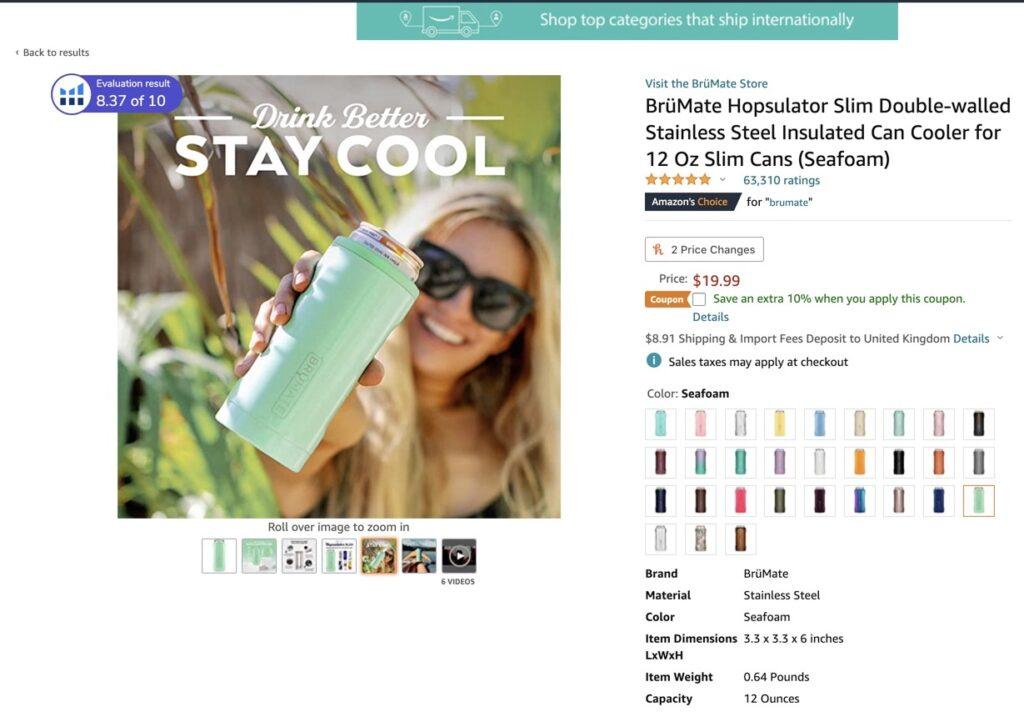
الأفكار النهائية
إن علامات أمازون التجارية ذات العلامات التجارية الخاصة موجودة لتبقى، ومن المرجح أن تستمر في النمو. بصفتك علامة تجارية إلكترونية صغيرة، فأنت تعلم أنه يتعين عليك البيع على أمازون للوصول إلى مئات الملايين من المشترين النشطين على المنصة أو المخاطرة بخسارة حصتك في السوق لصالح منافسيك. سواء كنت تبيع بالفعل على أمازون أو تتطلع إلى بدء علامة تجارية على أمازون FBA، عليك أن تميز علامتك التجارية عن العلامات التجارية لأمازون من خلال تسويق نقاط البيع الفريدة لمنتجاتك (USPs) من خلال العلامة التجارية ورواية القصص وبناء مجتمع نشط من المشترين المتحمسين.
